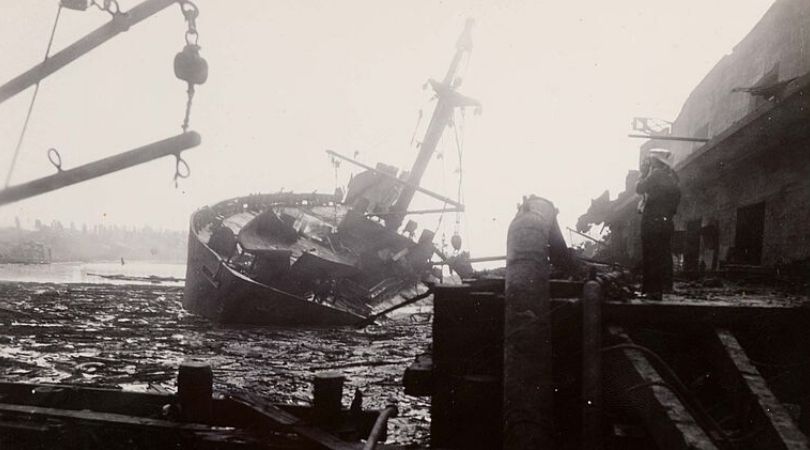If you’ve ever been to Texas city you might have noticed that something seems a bit…off. It’s a little city in a Houston suburb that’s a bit empty and fairly quiet. Malls have been turned into gyms, there’s a small college, but mostly it’s a spot you hit on the way to Galveston, Texas. But if you have been there and wonder what’s up, you may feel like there’s something that you can’t quite put your finger on. Perhaps maybe something has happened there. If you have that intuition, you’re right. It was the site of the Texas City Disaster.
Videos by Rare
The SS Grandcamp
Just about 30 minutes in from Galveston Island lies Texas City. In 1947 The Texas City disaster disrupted the small town in one of, to date, the deadliest industrial accident. The cause? An unfortunate chain of events that started with a fire onboard the SS Grandcamp.The SS Grandcamp was assigned to help with the rebuilding of France post World War II. Having arrived in Houston, the ship’s cargo consisted of sisal twine and ammonium nitrate.
This type of ammo was a common type of cargo and was loaded on multiple ships slated to be delivered to farmers in Europe. Ammonium nitrate was used as a versatile product. At the time it was used by farmers as fertilizer, other times it was a powerful explosive agent. Regardless of the destination and intended usage, Houston didn’t allow ammonium nitrate to be loaded. This is why on the morning of the accident, April 16, 1947, the ship was docked at the Galveston, Texas Port of Texas City.
The Chain Reaction
On the morning of the 16th, smoke was spotted near the Grandcamp around 8 am. This wasn’t an unusual happening. In port areas, little fires often popped up and attracted onlookers. No one really knows what the cause of this fire was. Many speculate that it was a cigarette flicked carelessly into the night. This time was no different in that degree. Regardless, what made the fire dangerous on that day, in particular, was the 2,300 tons of ammonium nitrate fertilizer waiting to be shipped.
The Texas City Fire Department was on the scene attempting to put out the fire. In an unfortunate turn of events, they were unsuccessful and an hour later the explosive matter detonated. All but one of these firemen were killed. The subsequent fifteen-foot shockwave was felt all the way in Galveston, Texas. This was just the beginning of this chain reaction industrial disaster. In the wake of the explosion, shrapnel flew buildings fell, and so did planes. The SS Grandcamp’s anchor flew into the city, thorough the air, creating a crater and deep reminder of its existence and chaos.
A second ship, the High Flyer was also carrying the aforementioned ammonium nitrate also blew up in a second explosion. Like the SS Grandcamp, the High Flyer left a permanent mark on the city. The propeller also traveled a mile inland.
Texas City Devastation
The death toll from the first blast killed almost 600 people instantly. This included onlookers, dock workers, firemen, residents of the city, and countless who went unidentified. This wasn’t nearly the extent of the damage; the fires continued to burn for weeks after the explosions. Not only did hundreds die, but over 5,000 people were also injured. Thousands more were left without homes and without vehicles. The port lay to waste and thousands of businesses were burned in the disaster estimating over $100 million of property damage.
The Memorial
A memorial park now honors those who lost their lives in the Texas City explosion. The volunteer fire department members are honored with a sculpted angel in a water fountain with appearances with the High Flyer propeller and the anchor of the Grandcamp. If you’re interested in a visual of this portion of Texas and U.S. history, the park can be reached by taking I-45 South to FM 1764/Lowry Expressway, the main road through Texas City. The park is on the corner of 29th Street and 25th Street.
Watch: Remembering the Granite Mountain Hotshots



